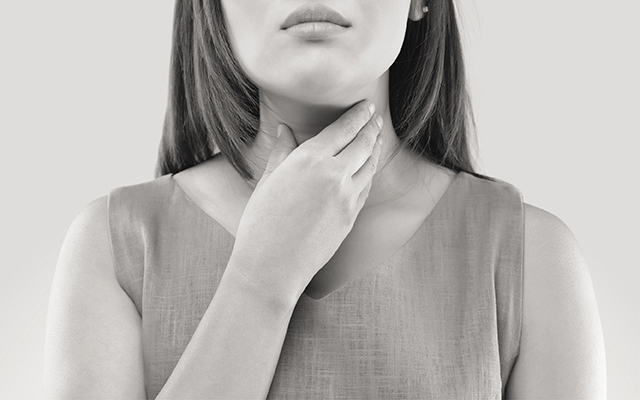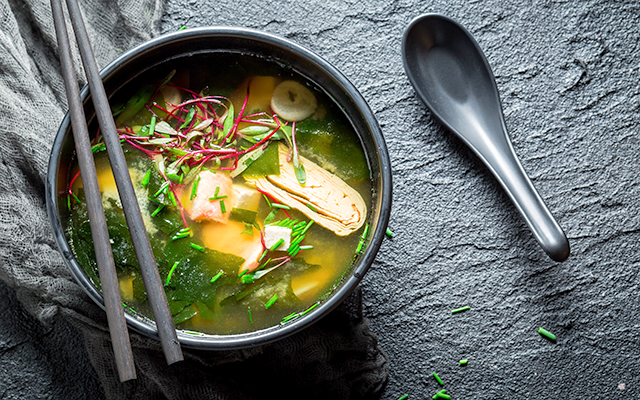This is an update of the original version of this post published on the Healthful Elements blog in July 2013, and was written by Jill Grunewald, HNC, and Mary Tomback, HNC.
In November of 2012, I wrote an article on how to “Repair Your Thyroid” for Experience Life. In that piece, I wrote that goitrogenic foods — including cruciferous veggies such as broccoli, cabbage, and cauliflower, and leafy greens such as collards and kale — were detrimental to thyroid function, unless cooked. Many practitioners, including some doctors, still believe this; however, my co-coach and fellow health writer, Mary Tomback, HNC, and I have stayed on top of the science and changed our stance.
Whereas we used to adhere to the “goitrogens as thyroid busters” philosophy and ask our hypothyroid clients to steer clear or greatly reduce their consumption of these foods, the good news is that the vast majority of them need not worry that these nutritional powerhouses will thwart their thyroid.
Allow me to explain.
Clearing Up the Confusion
Some animal research has suggested that consuming goitrogenic foods may suppress thyroid function by slowing the thyroid’s absorption of iodine. This, in turn, could cause a goiter — which is an enlargement of the thyroid — or so it’s been claimed. We’ve also been told that goitrogenic foods may inhibit the production of thyroid hormone.
Because of this research, many people with low thyroid function have been inclined to avoid the foods listed above, but many leaders in the functional-medicine community say that might be throwing the baby out with the bathwater. These goitrogenic foods, they say, contain too many beneficial nutrients and are far too supportive of the immune system to eliminate them from our diets. (The exception is soy, which we discuss below.)
“No human study has demonstrated a deficiency in thyroid function from consuming cruciferous vegetables,” says Joel Fuhrman, MD. “The scientific consensus [, however,] is that cruciferous vegetables could only be detrimental to thyroid function in cases of iodine deficiency or insufficient iodine intake.”
Dr. Alan Christianson, a naturopath who specializes in thyroid disorders, agrees. He argues that if an individual’s hypothyroidism is not caused by iodine deficiency — which, as I discussed in my earlier EL article, is the case for a reported 97 percent of hypothyroid sufferers — there’s no need to worry about the potential for slower iodine absorption.
Furthermore, if there is a potential risk to thyroid function by consuming cruciferous vegetables containing goitrogenic compounds, it may be outweighed by the benefits these vegetables provide. Many goitrogenic foods, for example, help the body produce glutathione, a powerful antioxidant that’s one of the pillars of fighting Hashimoto’s, which is autoimmune hypothyroidism. Cruciferous veggies also have a host of other general benefits, from detoxifying our bodies to helping to protect against many types of cancer (including thyroid cancer).
Putting It Into Practice
So, where does all of this information leave us? Dr. Datis Kharrazian, sums it up: “Any practitioner giving people lists of these foods and telling them not to eat them is outdated.”
So, clearly, these foods can and should have their places on our plates. If, however, you are one of the 3 percent of folks who have non-autoimmune hypothyroidism — so this is as a result of iodine deficiency (and not Hashimoto’s, which as stated earlier, is autoimmune hypothyroidism) — here are a few things to keep in mind.
First, cooking inactivates most goitrogenic compounds. Any potential harm to your thyroid exists only when the foods are eaten raw. So roast, steam, sauté, or blanch these foods, and then enjoy to your heart’s desire. Moderately goitrogenic foods such as peaches, radishes, watercress, and strawberries — foods few of us are likely to cook — aren’t deal-breakers.
If you love to add fresh greens to your morning smoothies, try blanching the greens and then freezing them in single-serving portions, like in an ice cube tray. They’ll be as easy to add to the blender as your frozen fruit.
Second, for those foods that are best eaten raw (or if you have a hankerin’ for crunchy, raw broccoli or homemade coleslaw), as with most things in life, moderation is key. As Dr. Fuhrman continues, “A person would have to consume an insane amount of raw cruciferous to have a negative effect on thyroid function.”
Again, those with Hashimoto’s — the vast majority of folks with hypothyroidism — can eat goitrogenic foods raw or cooked.
And, remember that with soy-based foods, being goitrogenic is not the only health concern. Soy can have an estrogenic effect, and there is a relationship between the thyroid and estrogen levels — many of us with thyroid issues find that we’re prone to estrogen dominance. Our advice is to choose fermented soy foods, such as tempeh over tofu, and eat only on occasion.
As people have continued to ask for clarification on this oh-so-confusing topic, Mary and I have repeatedly (and repeatedly) shared our original blog post that inspired this article. I, too, largely eschewed these vegetables for some time (because of my Hashimoto’s) and am thrilled to have them be a frequent part of my meals again. I put kale in just about everything I can (smoothies, meatloaf, scrambles, etc.), frequently have collards roll-up for lunch (with turkey, hummus, cucumber, and gomasio), and roast Brussels sprouts (my favorite vegetable!), cauliflower, and broccoli regularly. And, six years post-diagnosis, my Hashimoto’s is still in remission.
The “relief,” “freedom,” and “big exhale” that we’ve been able to provide for so many people is truly liberating — for them and us. So as you head off to the market, for goodness sake, don’t fear the crucifers. Or the leafy greens. Your thyroid won’t mind and the rest of your body will thank you in countless ways.



This Post Has 0 Comments